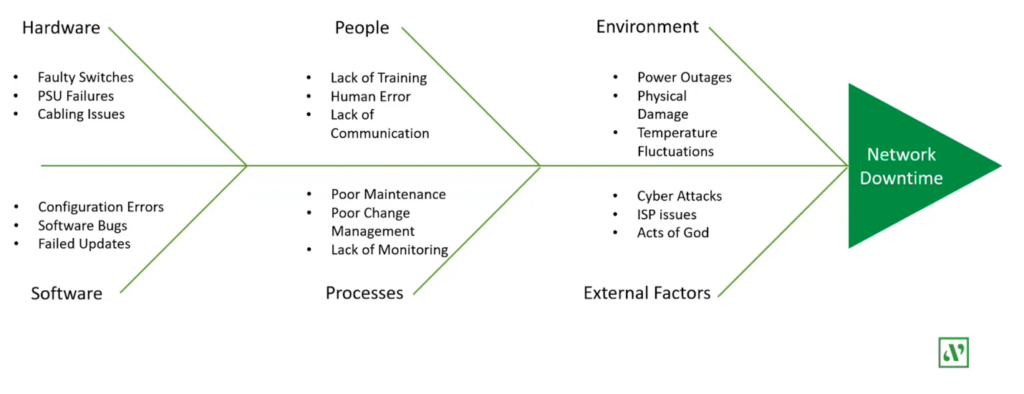Reboot Your Network with Ryan Recapped: Proactive Problem Management

This month’s webinar is all about proactive problem management. Ryan Harris, our Director of Service Delivery, discusses the differences between incident and problem management and how you can proactively monitor your network to prevent recurring issues.
What is Problem Management?
Problem management is a process aimed at identifying and managing the root causes of incidents in an IT environment. Whereas incident management focuses on fixing an existing issue, problem management proactively monitors to prevent having to address issues in the future.
Problem management seeks to identify and resolve the root cause of incidents, which helps prevent recurrences. Establishing strong problem management practices also improves the overall stability and performance of your company’s network.
Why Implement Problem Management?
Reduced Downtime: By addressing root causes, problem management minimizes the frequency and duration of service disruptions.
Cost Savings: Preventing incidents reduces the costs associated with downtime and emergency repairs.
Improved Service Quality: Consistent and reliable IT services enhance user satisfaction and trust.
Knowledge Management: Documenting problems and solutions are helpful to other employees for future reference and training.
Problem Management Challenges
Identifying Root Causes: Determining the underlying cause of a problem can be complex and time-consuming. To systematically identify root causes, implement Root Cause Analysis techniques, such as the Fishbone Diagram or the 5 Whys.

In this diagram, each “rib” of the fishbone is a possible root cause of network downtime. Consider each option to pinpoint the true cause of the issue.
Resource Constraints: Limited resources, such as time and budget, can hinder effective problem management. Because of this, you should prioritize problems based on impact and urgency. You may also consider using automation tools to streamline repetitive tasks and free up resources for more critical issues.
Communication Gaps: Poor communication between teams can lead to misunderstandings and delays in resolution. To combat this challenge, foster a culture of open communication in your workplace. Use collaboration tools and schedule regular meetings to ensure all stakeholders are informed and aligned.
Lack of Documentation: Inadequate documentation can lead to a loss of knowledge that may cause repeated issues. Be sure to establish a knowledge management system within your team. Encourage employees to thoroughly document problems, solutions, and lessons learned.
Problem Management Best Practices
- Proactive Problem Detection: implement monitoring and alerting tools to detect issues before they escalate and conduct regular system audits to identify potential problems early.
- Thorough Documentation: maintain detailed logs of all incidents and document their solutions for future reference.
- Root Cause Analysis: use structured methods like the 5 Whys and Fishbone Diagram to identify root causes. Involve cross-functional teams in the analysis to gain diverse perspectives.
- Effective Communication: establish clear communication channels between teams and provide regular updates to stakeholders on the status of problem resolutions.
- Prioritization and Categorization: prioritize and categorize problems based on their impact on business operations.
- Training and Development: continuously train your staff on problem management tools and techniques.
- Leveraging Technology: use automation tools to handle repetitive tasks and reduce manual effort. Implement advanced analytics to predict and prevent potential problems.
Unlock the full potential of your network with Plow Networks! Discover how our tailored network services can elevate your business. Visit our website to learn more and take the first step toward a more efficient future: Explore Our Network Services.
Explore more on:





